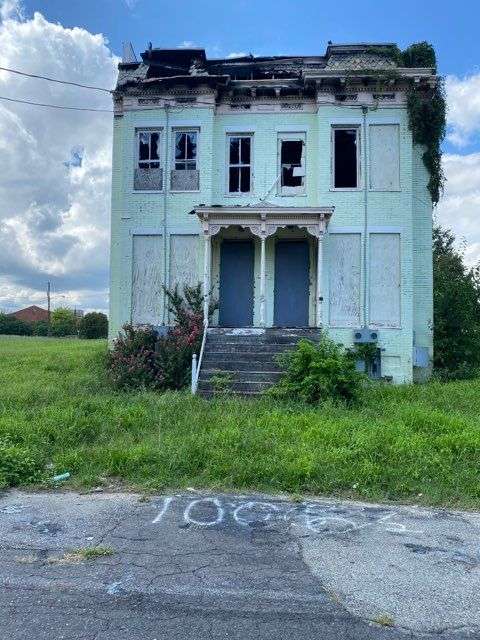The benefit of note investing is that you are not purchasing an REO and you are not purchasing at market rates. You are purchasing the balance left on the loan. In most cases, it is below the market value of the property.
This is a brief story of how insurance, solid due diligence and buying right, paid off.
The Note Investing Story
In the fall of 2021, my partners and I purchased a pool of 13 non-performing mortgage notes. We brokered off 12 of those notes and held on to one non-performing Contract for Deed in Richmond, Virginia. It was a 4-unit apartment building that sat across from a cemetery and was the only structure on that block. To top it off there was a hole in the roof. Yet, despite its haunted and horrible facade, our due diligence showed we could get about $75-90K for the structure as-is.
We acquired the note for $10K and because it was vacant and payments were more than 120 days delinquent, we immediately took legal action to cancel the contract and take the property back. It took several months to process paperwork and for the lawyer to do what was needed in order to gain possession of the property. By March of 2022 we had possession of the property and immediately put it on the market for sale.
Within two weeks we had an offer for $65K with a 5% equity stake. We jumped on it and set a date for closing.
A few weeks later, prior to closing I received a call from the Richmond Police Department and the Richmond Code Violation Department. The property was set on fire and burned to the ground. It was so bad that nearly the entire side of the building was lying in the middle of the street. It was a total loss.

The buyer backed out of the deal. So we decided to put it back on the market as-is with no demolition or removal of debris. We were selling ashes and the land it sat on. In the meantime, we had insurance on the property to cover our investment. We spent $10K to acquire the asset and $5K to gain possession. We had a $15,000 insurance policy. We received a check and it made us whole, covering the capital we deployed into the asset.
A few weeks later we received an offer for $60,000. Of course we accepted it and closed within a couple of weeks. In total, it took us almost 12 months to completely exit this note.
Challenges we Faced
Several challenges we faced while working out this asset:
- Richmond code enforcement contacted us daily regarding the high grass and clean up of the debris.
- Richmond is 3 months behind in issuing permits to clean up debris, yet code enforcement continues to call to find out when you plan on cleaning it up.
- When selling the property we ran into title issues and had to clean up the title and skip trace the individual who did not sign paperwork from years ago.
- We ended up spending an additional $1,500 to put a fence around the property since we could not get a permit in a decent amount of time and the debris was a danger to individuals in the area. We also spent an additional $500 total for multiple grass cutting while the property was on the market, and $1,000 to clean up the title.
- Despite the additional costs, we still managed to pull out a pretty good profit on this asset. Deducting the expenses along with closing costs, we walked away with approximately $49,000 profit.
Conclusion
As a note investor, you are not purchasing at a discount to the market value of the property, you are purchasing at a discount on the remaining balance of the loan. The remaining balance on this asset was $27K and we purchased it for $10K, knowing that the market value was between $75-90K (pre-burnout). But with the burnout, insurance payoff, reduced purchase price and additional expenses, there was still plenty of room for a profit. By doing thorough due diligence and running numbers on multiple exit strategies (and buffering those numbers for unexpected expenses), we knew this was a profitable asset and it proved us right.




